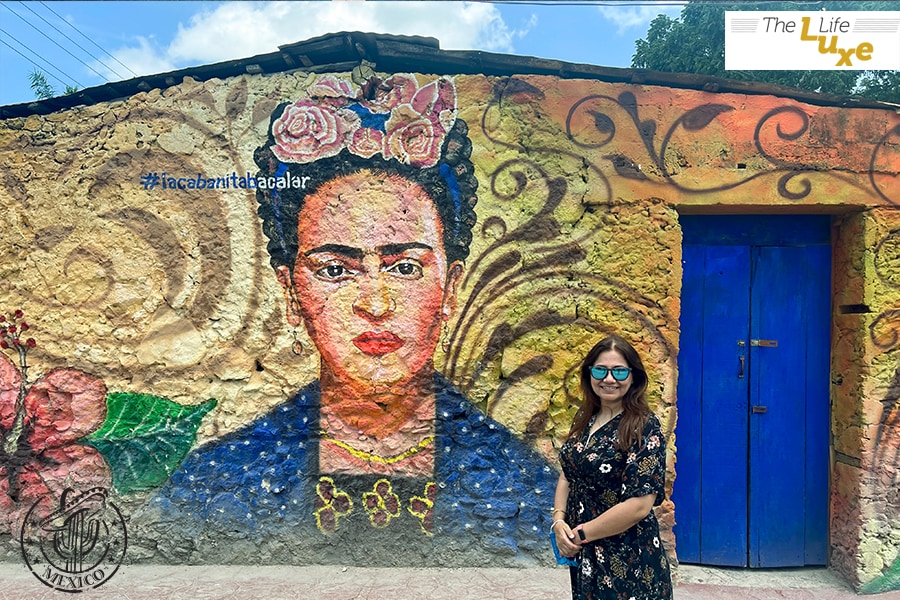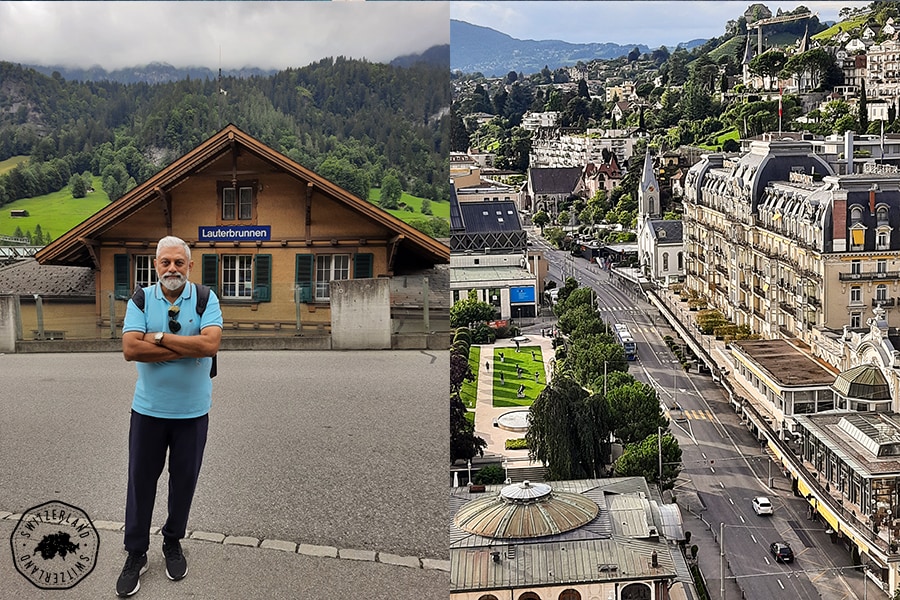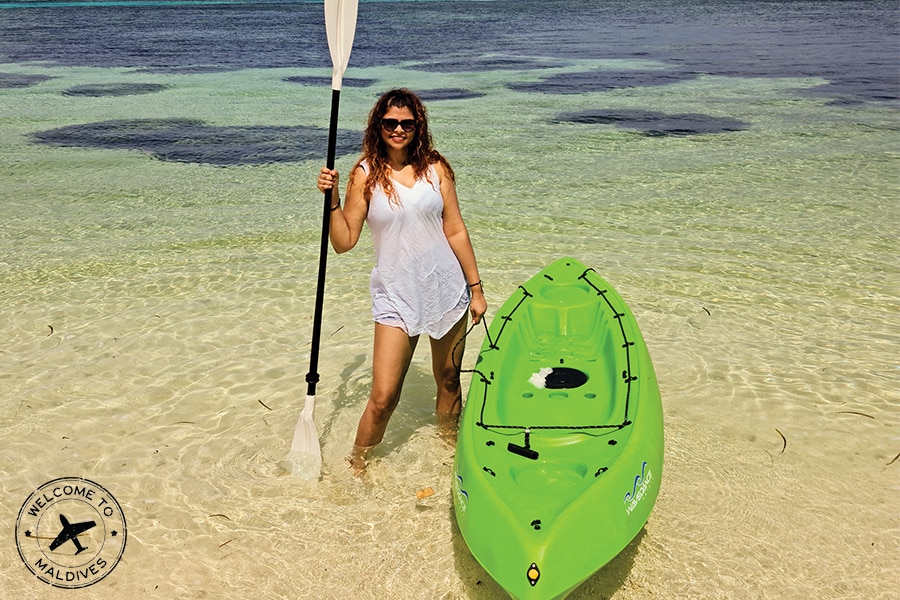In early August, even though the UK continued to keep Indian travellers on the strictest leash, the Kotharis packed their bags. To the UK eventually, but first to Switzerland, which was among the first European countries to open up to double-vaccinated Indians on June 23. “Instead of spending 10 days cooped up in a hotel room in the UK and paying £1,750 per person for it, we decided to ‘quarantine’ in Switzerland. There, we could move around without any restrictions and later on enter the UK without any fuss," says Kothari.
Alka Kaushik, a freelance travel writer, decided to indulge it before another Covid wave stopped outbound travel once again. Kaushik wanted to do a slow tour of the US, a plan she had to shelve when the pandemic set in in March 2020. But with border restrictions in force in the USA for Indians, Kaushik had to pick a third country in which to spend two weeks before entering the US. “I thought if I had to spend money to quarantine for the US, why not make an interesting holiday out of it," she says.
In July, the 51-year-old set off for Mexico on a 16-day trip, traversing Mexico City, Guanajuato and the Yucatan region, before arriving in Cancun to fly out to New York. Kaushik had to add about ₹1 lakh more to her original budget, but isn’t complaining, given the novel travel experience. “I breezed through immigration in the US, and, as a bonus, got to see the wonderful historical and cultural sites in Mexico. Truth be told, I enjoyed Mexico more than the US. I wouldn’t have known if I wasn’t forced to take this diversion."
Like Kaushik, more and more upscale Indian travellers are warming up to ways of sidestepping restrictions and booking that air ticket. On June 28, the first Monday after Switzerland announced its opening to Covishield-vaccinated Indians, queues at VFS centres, which accepts visa applications for the country, spilled outside and all visa slots were immediately booked. “That’s when travellers realised they could enter the UK without the obligatory institutional quarantine after staying in Switzerland for 10 days," says Ritu Sharma, deputy director and marketing head-India, Switzerland Tourism. “But even today, when such quarantine tourism is no longer needed, we are getting more visa requests per day. In Delhi, no appointments are available until almost the end of the month [as of mid-September]. In pre-Covid times, this time lag was a few days."
Adds Sharma: “A lot of people travelling at this time are the well-heeled ones, because you still have a lot of extras in travel today—RT-PCRs that are more expensive abroad, flights limited and hence more expensive. So a lot of five-star luxury resorts in Switzerland are seeing Indians coming in."
Before Switzerland, Dubai saw a pick-up for luxury travellers as the UAE banned all commercial flights from India on April 24, but exempted cargo, business and charters. “Each seat on a charter was going for between ₹3.15 lakh and ₹4.85 lakh," says Sajin Nawshad, business head of Akbar Travels, one of the largest travel companies in India. “We saw good movement on this front till rules first stopped non-families from travelling together in an eight-seat charter, and then all flights were banned."
Post that, flights to places like Belgrade (Serbia) and Mexico picked up to enter countries like the UK and the US. Or before Dubai opened up to all vaccinated Indians, people started travelling to the Emirates via the Maldives, Armenia, Belgrade and Moscow (Russia). But with limited travel options, prices were erratic and often skyrocketed.
![]() Moon Mukherjee decided to quarantine in the Maldives before heading to Dubai
Moon Mukherjee decided to quarantine in the Maldives before heading to Dubai
Moon Mukherjee, a counsellor based in Dubai, was stuck in her hometown of Kolkata since May after the UAE closed its borders for Indians. After several flight cancellations, and failed attempts to enter Dubai via Nepal or Bangladesh, she booked herself on a 16-day trip to the Maldives in early August to get around the restrictions on Indian travellers. While the iridescent blue waters and the pristine beaches provided some respite from the constant juggling of travel plans, Mukherjee’s quaran-tourism was marred by dizzying costs, right from accommodation charges of $100 to food expenses of $20 for two meals a day.
Similarly, Mohit (name changed), an MBBS from India looking to emigrate to the UK, had to reach Manchester at a time India was still on the UK’s red list. He travelled via Belgrade, where cases were barely 20 or 30 per day and which exempted Indians from a visa. But Mohit had to shell out ₹90,000 for tickets, which he could have organised for ₹30,000 in pre-Covid times.
At times, rates have pushed upwards of ₹2.5 lakh for a ticket from Mumbai to Belgrade or Moscow, says Nawshad. Such price points have ensured international travel is primarily propelled by high-end or luxe clients, and/or situational visits like medical and family.
Akbar Travels has sent over a thousand passengers to Moscow in the last few months, of which “a good 10 percent were high-end and travelling for just tourism, not quarantining", says Nawshad. It’s quite a jump from their pre-Covid figures where barely 20 percent of the enquiries would come in for Russia. When Dubai as a destination was selling like hot cakes, and enquiries from every second or third high-end customer materialised into a sale, the company booked more villas than hotels, with tariffs ranging from ₹7 lakh to ₹30 lakh per month, and most bookings being long term—from one to six months.
At Thomas Cook, too, a strong upside over the past 18 months has been the significant rise in high-end travel. “We have delivered an extensive range of ultra-luxury vacations for our HNI and UNHI segments, both within India and abroad—Maldives, Dubai, Russia and currently Switzerland and France. To give you a perspective, over 24 percent of our customers to the Maldives have opted for luxury/deluxe resorts. For our India market, we have already surpassed our pre-pandemic luxury topline by over 35 percent," says Madhavan Menon, managing director, Thomas Cook (India) Ltd.
Sixty percent of Thomas Cook’s demand pipeline has been driven by international—the Maldives, Dubai and Europe (Switzerland, France, Germany and Austria), at 20 percent each—and the rest domestic, primarily comprising staycations/workations with luxury brands or at heritage properties that afford luxuries like personal chefs and concierges. “With a number of international destinations opening up, a crà¨me de la crà¨me MICE [incentive] group is underway for about 75 corporate customers with top-end accommodation at hotels like the Waldorf Astoria, Versailles, France," adds Madhavan.
With the rules of travel changing in the post-Covid world, travel companies, too, have tweaked their modus operandi in selling destinations to customers. Earlier, they would send out a mailer with information on the inclusions and attractive pricings. Now, conversations revolve around educating the customer on the Covid situations in a country. “While some countries may allow you to travel, they might require you to quarantine for a certain period. Which means it’s not feasible for many leisure travellers to visit any country that’s open for Indians," says Nawshad.
This puts countries like the UK—that still needs home quarantine for 10 days and three RT-PCRs (each of which can cost between £40 and £140)—at a disadvantage. Or even the US, whose border closure for Indians necessitates a 14-day ‘quarantine’ stay in a third country. “Detours and quarantine mandates are deterrents and raise expenses steeply. So travel to these countries hasn’t picked up as much," says Rajeev Mehra, president of Indian Association of Tour Operators.
Dubai is a frontrunner among countries expected to see a rush of tourists, with Expo 2020 beginning on October 1 and carrying on for the next six months. Most travel agents have pre-purchased tickets and Akbar Travels alone is expecting to send a minimum of 100,000 people to the event.
For SOTC, on the other hand, Switzerland has always been one of the most sought-after destinations, followed by France. “We have noticed customers picking up private apartment stays in Switzerland and including off-beat locales. In France, we are seeing a growing interest for private van tours and second city destination stays, like in a vineyard or medieval chateau," says Vishal Suri, managing director.
![]()
Anindita Chatterjee celebrated her babymoon in Mexico with an eye on entering the US later
Anindita Chatterjee, an ex-marketing professional and the founder of portal Travel Chatter, celebrated her babymoon in Mexico with an eye on entering the US later. But with a freak visa problem barring her US entry, she used the country as a gateway to South America and the Caribbean, adding Colombia, and the picturesque islands of Aruba and Curacao to her 45-day itinerary beginning June. “Travelling during the pandemic has made me so much more confident about what a woman can do while being pregnant," says Chatterjee.
Perhaps in these joys of discovery lie the few silver linings of the pandemic.



 Moon Mukherjee decided to quarantine in the Maldives before heading to Dubai
Moon Mukherjee decided to quarantine in the Maldives before heading to Dubai 